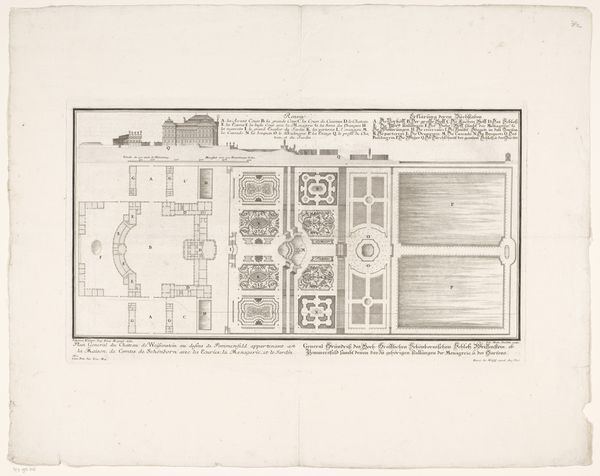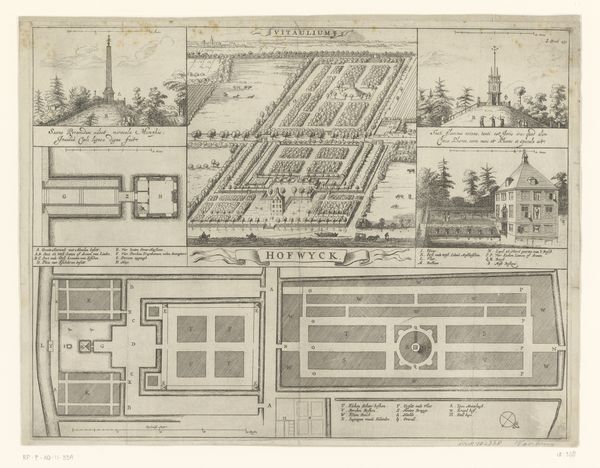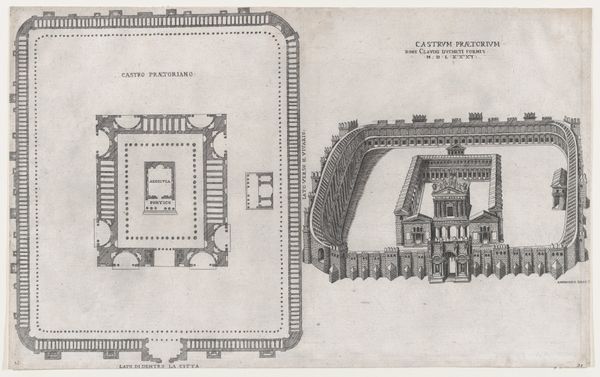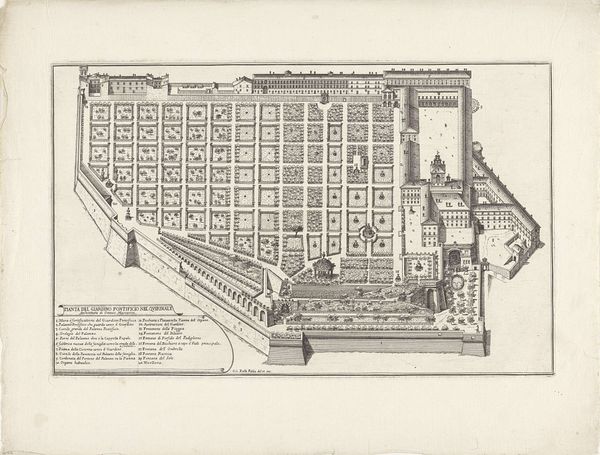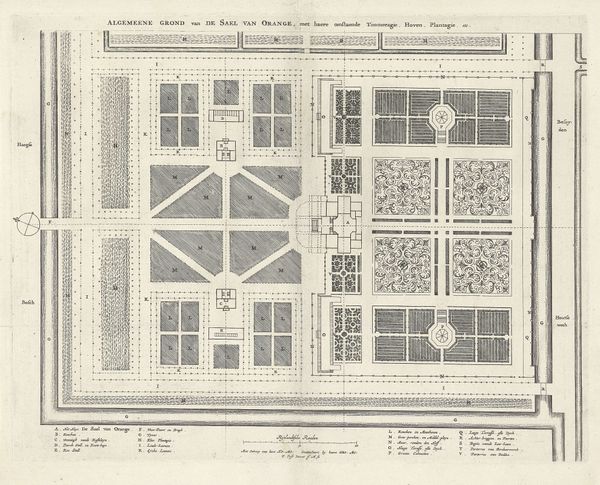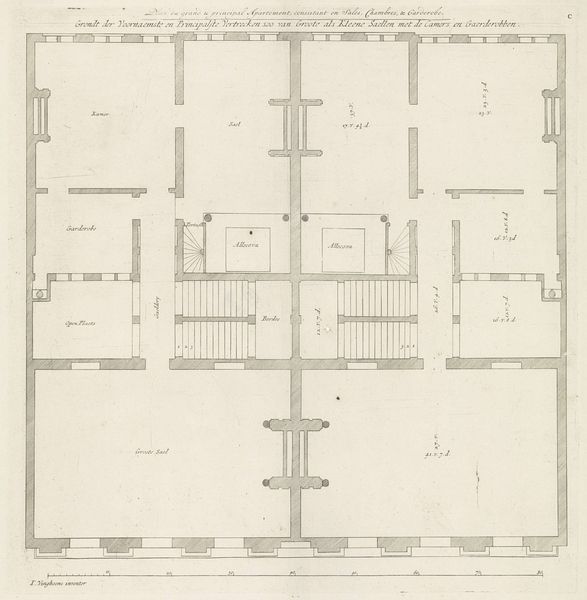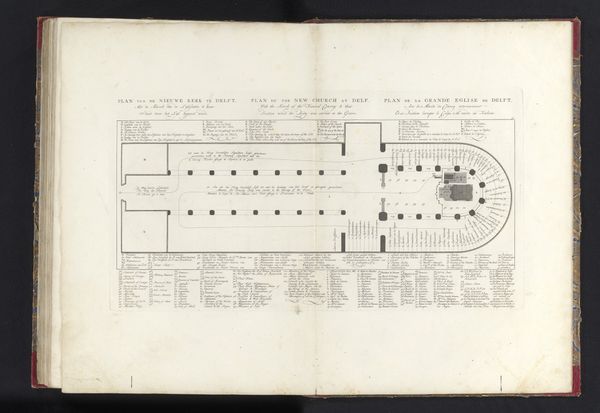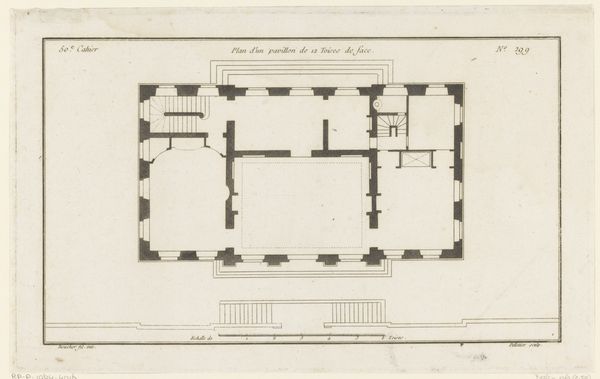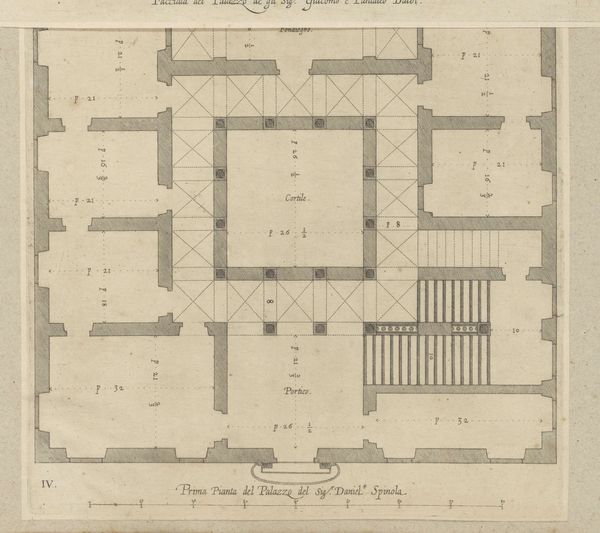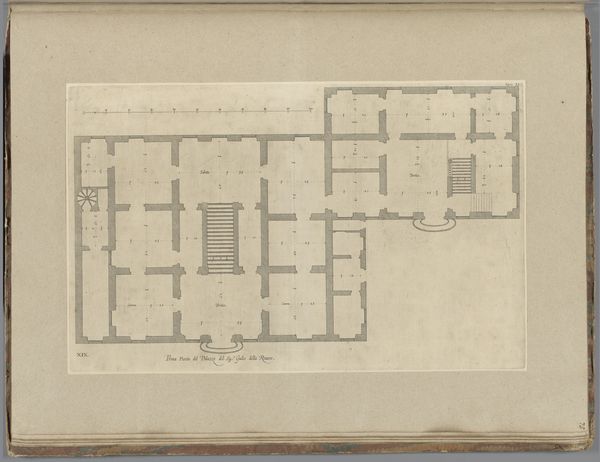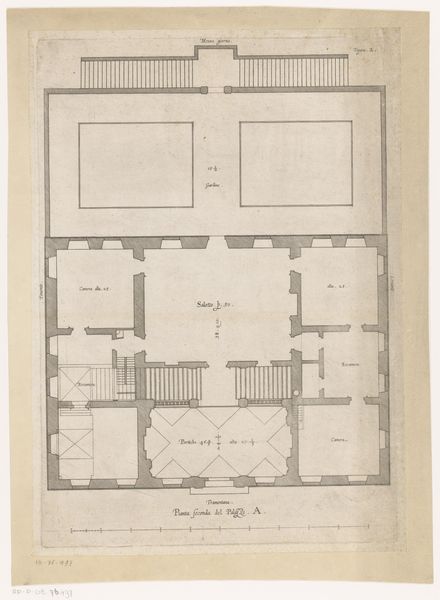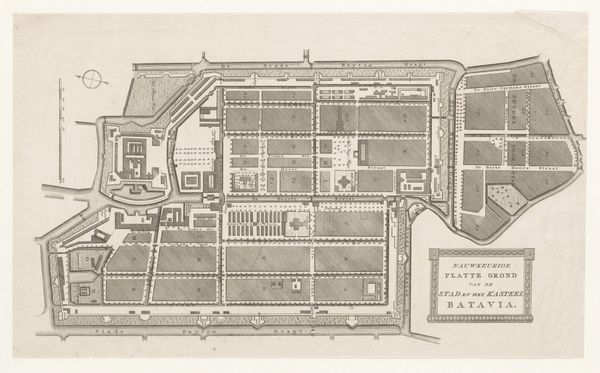
Dwarsdoorsnede en plattegrond van Schloss Gaibach 1727 - 1754
0:00
0:00
johannmatthiassteudlin
Rijksmuseum
drawing, print, paper, engraving, architecture
#
drawing
#
baroque
# print
#
landscape
#
paper
#
engraving
#
architecture
Dimensions: height 301 mm, width 654 mm
Copyright: Rijks Museum: Open Domain
Editor: This is "Dwarsdoorsnede en plattegrond van Schloss Gaibach," a print and engraving by Johann Matthias Steudlin dating from 1727 to 1754. It's a very detailed architectural plan. It reminds me a bit of Versailles, but more austere. What strikes you about this work? Curator: It's a fascinating piece for how it reveals the intersection of power and aesthetics in the Baroque era. We’re not just looking at a blueprint, but at a carefully constructed image designed to project status. Consider the obsessive symmetry, the implied control over nature…it all speaks to the aspirations of the aristocracy. Do you see how the layout enforces a hierarchy, directing the gaze from the formal gardens to the grand palace? Editor: Absolutely, I notice how the perspective guides you directly from the orderly gardens to the central structure. How would something like this have influenced the public's view of the ruling class at the time? Curator: Images like this served as propaganda, reinforcing the image of an orderly, divinely ordained society with the nobility at its apex. The precise lines, the geometry - it suggested rationality and control in a world that was often chaotic. Think about the message it sends: "We have the means to command nature itself, and thus we are fit to command you." These weren't simply private residences; they were stage sets for power. Editor: So it was about establishing not just physical space, but social space as well? Curator: Precisely. And the Rijksmuseum possessing it now underscores the ways these former symbols of authority are recontextualized within a public institution, prompting reflection on shifting societal values. Does seeing the plan in this context change your initial impressions? Editor: Yes, now I'm less focused on the "Versailles" aesthetic and more on the implied social dynamics, how a drawing on paper could embody so much about the socio-political climate. Thanks for that insight. Curator: It’s a privilege to re-examine our understanding together!
Comments
No comments
Be the first to comment and join the conversation on the ultimate creative platform.
